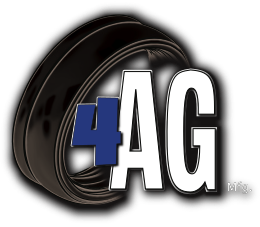Can A Planter Handle Tough Conditions? Learn the Adjustments
Successful planting involves more than just the planter itself. It's about understanding the right balance of seed placement, soil conditions, and the tools that bring it all together. Considering the following sections that detail the wide range of adjustments and improvements, see how the key element, like closing wheels for planters, deserves special recognition for optimizing yield potential.
Optimizing Planter Performance in Challenging Conditions
Planting in poor field conditions poses the biggest challenge to planter performance and crop establishment. It's better to delay planting than risk losses due to suboptimal conditions. However, in difficult years, the pressure to plant early is high. In such situations, quickly adapting planter settings to changing conditions is crucial for successful crop emergence and growth.
The goal is to achieve consistent planter performance across diverse soil types and field conditions. Planter setup varies depending on no-till or conventional till, sandy or clay soil, and wet or dry conditions. Understanding how these factors affect planter performance is key to making adjustments that optimize planting results. Develop your planter's performance with essential tools like closing wheels for planters and necessary upgrades.
Seedbed Preparation- The Foundation for Optimal Planting
Achieving uniform planting depth and spacing begins before the seed meets the soil. Row cleaners and opening colters play a crucial role in preparing the seedbed, ensuring gauge wheels operate consistently. Their primary function is residue management, creating a clean planting strip. This fosters uniform soil temperature and faster emergence. It also sets the stage for the closing wheels for planters to work effectively.
However, it's vital to monitor soil movement caused by these tools. While some disturbance is acceptable, excessive clods or depressions compromise the planting strip's uniformity. Fine-tune your setup to minimize variability and maximize planter performance.
Optimizing Seed-to-Soil Contact with Seed Firmers
In challenging soil conditions, ensuring optimal seed-to-soil contact is important for successful germination. Seed firmers act as a bridge between the furrow created by the planter and the final firming action with closing wheels. By gently pressing the seed into the soil and securing its position within the trench, seed firmers enhance moisture access and prevent seed displacement as the soil dries and contracts.
Closing Wheels for Planters- Rubber-Edged Options
Rubber-edged closing wheels for planters are a common default choice, offering moderate down pressure to close furrows and firm the seedbed. Their effectiveness shines in drier, tilled conditions with friable soils. However, they may falter in heavier clay, wet, or no-till environments, struggling to close the furrow adequately. Recognizing these limitations helps the growers select closing wheels that align with their specific field conditions and maximize planting success.
Considering Cast Iron Options for Closing Wheels
Cast iron closing wheels are known for their weight and sharper edges. These offer a more aggressive approach than their rubber counterparts. While advantageous in no-till fields, they may exert excessive downforce in wet & tilled soils. Careful consideration is crucial, as their aggressive nature can deform the seed furrow, potentially hindering seed emergence. Striking the right balance between downforce and soil conditions is key to unlocking their full potential.
Spiked Solutions for Challenging Seedbeds
Spiked closing wheels, equipped with varying protrusions, offer a unique approach to seedbed management. Often paired with or replacing rubber wheels, these spiked designs effectively fracture the seed trench wall. These promote a loose and unsteady soil layer above the seed. The ideal degree of soil fracture depends heavily on seedbed conditions. If standard closing wheels prove inadequate, consider exploring spiked options tailored to your specific needs.
Developing Performance with Drag Chains
Drag chains, trailing behind closing wheels for planters, offer a final touch to seedbed management. They gently firm the furrow and level the planting strip, potentially mitigating crusting issues. However, their effectiveness is context-dependent. Chains tend to pull soil onto the furrow, and their impact on seed emergence varies with soil conditions. A notable advantage is their easy adjustability when smearing occurs. These simply lift or remove them for optimal seedbed preparation.
A Continuous Process for Optimal Yield
Maximizing the benefits of planter add-ons, including quality closing wheels for planters, hinges on understanding their applications and limitations. This season, dedicate time to examine the seed furrow immediately after planting & throughout early growth across diverse soil types and conditions. Document these observations to correlate them with emergence and growth patterns. Most importantly, remain vigilant and adjust your planter setup as conditions change. Small adjustments can significantly impact your crop's performance.
Improve Your Closing Wheel Performance With 4AG Manufacturing
Don't let challenging conditions compromise your yield potential. Get high-performance closing wheels for planters from 4AG Manufacturing. Our premium closing wheels are engineered to tackle diverse soil types, ensuring optimal seed-to-soil contact and consistent seedbed closure. Contact us today to enjoy the perfect closing wheel solutions.
